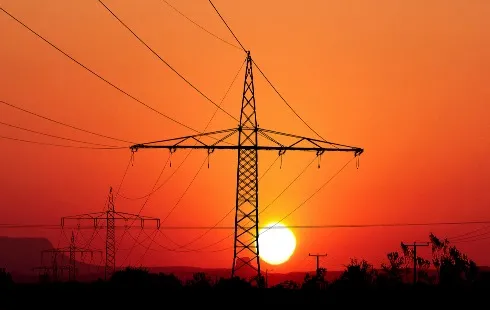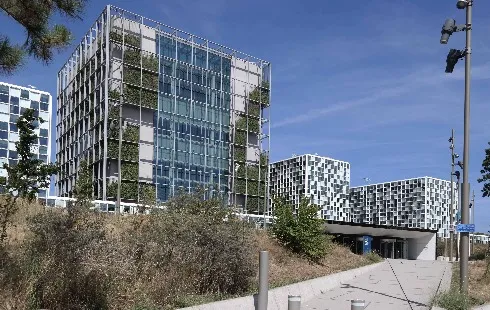
Trump's Tariff War: China Urges Immediate Repeal of Tariffs Amid Countermeasures
Section: News
The price of coffee has doubled over the past year, driven by a combination of factors including geopolitical conflicts, regulatory challenges within the European Union, and the ongoing effects of climate change. Despite rising costs, global demand for coffee continues to flourish, although producers are seeing little benefit from the price surge.
Since October 2023, the price of Arabica beans on the New York futures market has increased by 150%, with no immediate signs of a downturn. Historically, coffee prices have experienced cycles, typically lasting six to seven years, according to the International Coffee Organization (ICO). The organization, founded in 1962 to unite producers and buyers, is currently led by Vanusia Nogueira, its first female director.
While coffee prices are high, Nogueira emphasizes that they are not unprecedented when viewed in historical context. For instance, after the oil crisis in the 1970s, coffee prices soared to unprecedented levels. Today, the average price per pound is nearly $4, yet this does not compare to the inflation-adjusted prices seen in the past.
Multiple factors contribute to the current pricing issues affecting coffee. On the supply side, climate change has severely impacted production. For instance, Glaucio de Castro, a second-generation coffee farmer in Brazil's Minas Gerais region, has witnessed his yields drop drastically due to adverse weather conditions. After a record harvest in 2020, subsequent years have brought frost, drought, and excessive heat, resulting in a significant decline in his output.
Brazil, the world's largest coffee producer, has faced challenges, with neighboring Colombia also reporting poor harvests. Furthermore, Vietnam, a major producer of Robusta beans, is experiencing low stock levels, prompting farmers to purchase coffee from other regions to fulfill contracts. This situation has exacerbated price increases.
Despite these challenges, global coffee consumption has not declined. In 2024, worldwide coffee consumption rose by 1.8%, with Europe accounting for a significant portion of this growth. In the U.S., ready-to-drink coffee products saw a remarkable 12% increase in consumption compared to the previous year. The persistent demand for coffee illustrates its integral role in daily life, particularly in wealthier nations where consumption is less sensitive to price fluctuations.
Farmers like de Castro struggle to benefit from rising prices, as many have already sold their harvests at lower rates out of necessity. Rising production costs, including fertilizers and labor, further complicate the situation. Many young people are disinclined to pursue agricultural careers, exacerbating labor shortages.
Investments in coffee farming are also delayed due to the uncertainty surrounding future yields. Farmers are hesitant to commit to selling their crops at high prices until they can accurately assess their harvests. As a result, some are converting farmland used for other crops, like soybeans, into coffee plantations, but this transition takes years before it becomes profitable.
Political influences also play a role in the coffee market. Sanctions affecting Russia, a major coffee consumer and fertilizer supplier, have disrupted logistics. In the Middle East, conflicts have impacted shipping routes, while U.S. trade policies may alter the market landscape if tariffs are imposed on countries engaged in coffee agreements with China.
The EU's regulatory framework is creating additional uncertainties for coffee producers worldwide. As the largest coffee consumer globally, Europe's new sustainability reporting and supply chain laws could significantly affect coffee producers. Recent delays in the implementation of regulations have left many producers uncertain about their future market access, which in turn drives prices higher.
Overall, while coffee prices are at an all-time high, the realities of production and market dynamics highlight the complexities faced by farmers, who often do not see the rewards of rising prices due to systemic challenges.

Section: News

Section: News

Section: Politics

Section: News

Section: News

Section: Politics

Section: Arts

Section: News

Section: News

Section: Business

Health Insurance in Germany is compulsory and sometimes complicated, not to mention expensive. As an expat, you are required to navigate this landscape within weeks of arriving, so check our FAQ on PKV. For our guide on resources and access to agents who can give you a competitive quote, try our PKV Cost comparison tool.

Germany is famous for its medical expertise and extensive number of hospitals and clinics. See this comprehensive directory of hospitals and clinics across the country, complete with links to their websites, addresses, contact info, and specializations/services.

Join us for a captivating organ concert featuring Giacomo Gabusi from Bologna. Experience an evening of classical music with works by Wagner, Bossi, and Messiaen, among others. This event is part of the Pasinger Orgeltage series, promising a delightful musical experience. Admission is free, but...
No comments yet. Be the first to comment!